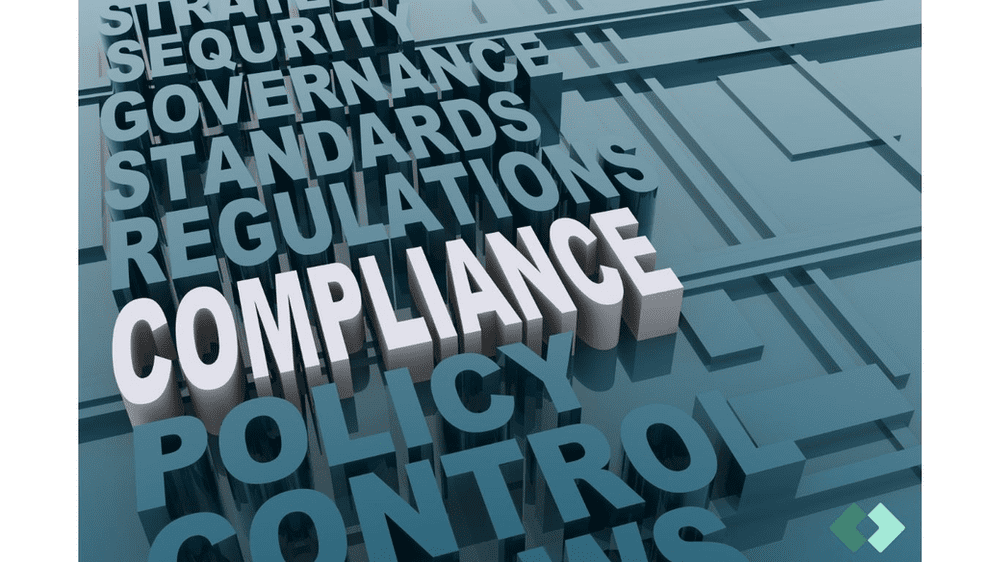In an era of ever-increasing cyber security threats, financial institutions and companies handling sensitive customer data are under constant pressure to ensure the security and privacy of this information. The Gramm-Leach-Bliley Act (GLBA), also known as the Financial Modernization Act of 1999, plays a pivotal role in safeguarding consumer financial data in the United States. In this blog, we will delve into the intricate details of GLBA compliance and understand why it is crucial for businesses. We’ll explore the key aspects of GLBA, its requirements, enforcement, and its significance in the realm of cybersecurity.
What is GLBA?
The GLBA safeguards rule is a federal law in the United States that mandates financial institutions to protect the privacy and security of consumers’ nonpublic personal information (NPI). It aims to enhance data security, transparency, and consumer confidence in the financial sector.
What are the benefits of GLBA?
The primary benefits of GLBA include:
Enhanced consumer trust: By safeguarding NPI, financial institutions build trust with their customers.
Reduced data breaches: GLBA requirements help mitigate the risk of data breaches and cyberattacks.
Legal compliance: Compliance with GLBA ensures adherence to federal regulations, avoiding potential legal issues.
Reputation management: A commitment to data privacy enhances an institution’s reputation.
What does GLBA do?
GLBA primarily regulates the handling of NPI by financial institutions. It requires them to develop data protection measures, provide privacy notices to consumers, and ensure the security of their data.
What is GLBA compliance?
GLBA compliance is the adherence to the Gramm-Leach-Bliley Act’s requirements, ensuring the protection of consumers’ nonpublic personal information and the implementation of safeguards to prevent data breaches and unauthorized access.
What does GLBA stand for?
GLBA stands for Gramm-Leach-Bliley Act, which is a federal law aimed at protecting the privacy and security of consumer financial information.
What is GLBA in cybersecurity?
GLBA act plays a critical role in cybersecurity by establishing requirements and standards for the protection of financial data. It ensures that financial institutions implement robust security measures to safeguard consumer information from cyber threats.
What does GLBA mean?
GLBA means ensuring the privacy and security of consumers’ financial information through legal requirements and security measures. It stands for protecting sensitive data and maintaining consumer trust.
Is GLBA the same as Reg P?
No, GLBA and Regulation P (Reg P) are not the same. While they both pertain to the financial industry, Reg P specifically focuses on the privacy of consumer financial information. GLBA, on the other hand, encompasses a broader set of requirements related to consumer financial privacy, security, and data protection.
What are GLBA requirements?
GLBA sets forth several requirements to ensure the privacy and security of nonpublic personal information (NPI) held by financial institutions. These requirements include:
Developing and implementing an information security program.
Providing consumers with clear and accurate privacy notices.
Safeguarding NPI through policies and procedures.
Regularly assessing and updating security measures.
Overseeing service providers’ compliance with GLBA.
How does GLBA define a consumer?
GLBA meaning defines a consumer as an individual who obtains or has obtained a financial product or service from a financial institution that is used primarily for personal, family, or household purposes.
How is GLBA enforced?
GLBA compliance is enforced by several regulatory agencies, including the Federal Trade Commission (FTC), the Federal Reserve, and the Consumer Financial Protection Bureau (CFPB). These agencies monitor financial institutions to ensure they adhere to GLBA’s requirements and may impose penalties for non-compliance.
What is a financial institution under GLBA?
A financial institution under GLBA includes banks, credit unions, securities firms, insurance companies, and businesses engaged in financial activities. It encompasses a wide range of organizations that handle consumer financial information.
What is NPI in GLBA?
NPI, or nonpublic personal information, refers to any data that is not publicly available and is linked to an individual’s financial transactions. It encompasses data such as social security numbers, account numbers, and financial statements.
What is a GLBA privacy notice?
A GLBA privacy notice is a document provided by financial institutions to their customers that explains the institution’s privacy policies and practices regarding the collection and sharing of nonpublic personal information. It informs consumers about their rights and options related to their data.
What is GLBA exemption?
GLBA provides certain exemptions for specific types of information sharing, such as sharing information with affiliates or with consumers’ consent. These exemptions allow institutions to share information under certain conditions without violating GLBA’s privacy requirements.
What is GLBA permissible use?
GLBA permissible use refers to the circumstances under which financial institutions are allowed to use and share nonpublic personal information without obtaining additional consent from consumers. It is governed by specific conditions outlined in GLBA.
What is the GLBA Safeguards Rule?
The GLBA Safeguards Rule requires financial institutions to establish and maintain an information security program that includes policies and procedures to protect the security and confidentiality of customer information. It aims to safeguard consumer data from potential threats.
What does GLBA include?
GLBA includes a comprehensive set of requirements for financial institutions, encompassing data protection, privacy notices, safeguards, and oversight of service providers.
When does GLBA apply?
GLBA applies to financial institutions that provide financial products or services to consumers for personal, family, or household purposes. It also applies when these institutions collect, disclose, or share nonpublic personal information.
When was the GLBA Act enacted, and why?
The Gramm-Leach-Bliley Act (GLBA) was enacted on November 12, 1999, to address concerns related to consumer financial privacy and the security of nonpublic personal information. It aimed to modernize and regulate the financial services industry, enhance transparency, and protect consumer information.
What is the purpose of the GLBA?
The primary purpose of the Gramm-Leach-Bliley Act is to protect the privacy and security of consumers’ nonpublic personal information held by financial institutions. It also seeks to promote consumer confidence in the financial industry.
Which regulators have GLBA responsibility?
Several regulatory agencies share responsibilities for overseeing GLBA compliance, including the Federal Trade Commission (FTC), the Federal Reserve, and the Consumer Financial Protection Bureau (CFPB).
Which rules did GLBA include?
GLBA includes several key rules and provisions, such as the Privacy Rule, the Safeguards Rule, and the Financial Privacy Rule. These rules collectively govern the protection of nonpublic personal information and consumer privacy.
Who does GLBA apply to?
GLBA applies to a wide range of financial institutions, including banks, credit unions, securities firms, insurance companies, and businesses engaged in financial activities. It also applies to institutions that collect and handle nonpublic personal information.
Who enforces GLBA?
Various regulatory agencies, including the Federal Trade Commission (FTC), the Federal Reserve, and the Consumer Financial Protection Bureau (CFPB), collectively enforce GLBA. These agencies are responsible for ensuring that financial institutions comply with the requirements set forth by GLBA and may impose penalties for non-compliance.
Why is GLBA important?
The importance of GLBA cannot be overstated, especially in the current landscape of digital threats and cyberattacks. Here’s why GLBA is crucial:
Protects Consumer Data: GLBA safeguards consumers’ nonpublic personal information, ensuring their sensitive data remains secure and confidential.
Mitigates Data Breaches: Compliance with GLBA helps financial institutions implement robust security measures, reducing the risk of data breaches and cyberattacks.
Legal Compliance: Non-compliance with GLBA can lead to severe penalties and legal consequences, making it imperative for financial institutions to adhere to its requirements.
Builds Trust: Demonstrating a commitment to data privacy through GLBA compliance enhances consumer trust, which is essential in the financial industry.
New GLBA Requirements:
The regulatory landscape in the field of cybersecurity is constantly evolving to address emerging threats and challenges. While the core principles of GLBA have remained relatively consistent since its enactment, there have been updates to accommodate the evolving cyber landscape. Staying informed about these changes and ensuring compliance with the latest requirements is essential for financial institutions.
What does GLBA protect?
GLBA primarily protects the privacy and security of consumers’ nonpublic personal information (NPI) held by financial institutions. It does so by imposing strict requirements on data protection, transparency, and security measures to prevent unauthorized access or data breaches.
In an age where data breaches and cyber threats are all too common, the Gramm-Leach-Bliley Act (GLBA) is an essential safeguard for the financial industry and consumers alike. It not only protects sensitive financial information but also promotes transparency and trust between financial institutions and their customers. Adhering to GLBA requirements ensures that consumer data remains secure, legal compliance is maintained, and reputational risks are minimized.
OneUp Networks offering GLBA compliance solutions will be a significant step towards providing comprehensive data protection for your clients. By educating yourself and your customers on the intricacies of GLBA and its requirements, you can better equip your business to navigate the complexities of the modern financial landscape and address the ever-present cybersecurity threats.














